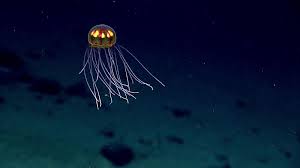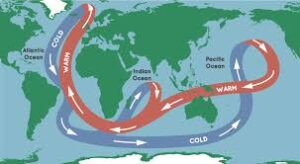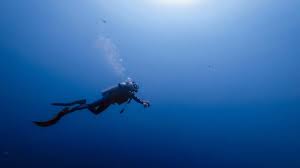The ocean, covering over 70% of Earth’s surface, remains one of the most mysterious and vital components of our planet. It is a dynamic system that influences global climate, weather patterns, and supports a diverse range of life forms. In 2024, advances in oceanography and marine science continue to reveal astonishing facts about the ocean that deepen our understanding and appreciation of this vast, blue frontier. This article explores some of the most amazing science facts about the ocean as of 2024, highlighting recent discoveries and ongoing research.
1. The Depths of Ocean Exploration

1.1. Extreme Depths and Pressure
The ocean’s deepest regions are astonishingly profound. The Mariana Trench, the deepest part of the world’s oceans, reaches a depth of approximately 36,070 feet (10,994 meters). The pressure at this depth is over 1,000 times the standard atmospheric pressure at sea level.
- Pressure Adaptations: Organisms that thrive at such extreme depths have evolved unique adaptations to withstand the immense pressure. For example, deep-sea creatures like the giant amoeba Xenophyophore have flexible, high-density proteins to avoid collapse under pressure.
1.2. Advances in Submersible Technology
Recent advancements in submersible technology have allowed scientists to explore these extreme depths more effectively. In 2024, autonomous underwater vehicles (AUVs) and remotely operated vehicles (ROVs) are equipped with advanced sensors and high-resolution cameras, providing unprecedented views of deep-sea ecosystems.
- Exploration Missions: These technologies have led to groundbreaking discoveries, such as new species of bioluminescent organisms and previously unknown hydrothermal vent communities.
2. Marine Biodiversity and Ecosystems
2.1. The Rich Diversity of Marine Life
The ocean is home to an incredible diversity of life, estimated to include over 230,000 known species, with many more yet to be discovered. From the largest animal on Earth, the blue whale, to the smallest microorganisms, the variety of marine life is staggering.
- Coral Reefs: Coral reefs, often referred to as the “rainforests of the sea,” support around 25% of all marine species despite covering less than 1% of the ocean floor. They provide crucial habitats and are vital for marine biodiversity.
2.2. The Role of Microorganisms
Microorganisms, including bacteria, phytoplankton, and zooplankton, play essential roles in marine ecosystems. Phytoplankton, for example, are responsible for producing over 50% of the world’s oxygen through photosynthesis.
- Carbon Cycle: Marine microorganisms also contribute significantly to the global carbon cycle. They absorb carbon dioxide from the atmosphere and help regulate climate by storing carbon in the deep ocean.
3. Ocean Circulation and Climate

3.1. The Global Conveyor Belt
Ocean circulation is a critical component of Earth’s climate system. The global conveyor belt, a complex system of ocean currents, helps distribute heat around the planet and influences weather patterns.
- Thermohaline Circulation: This system is driven by differences in water density, which is affected by temperature and salinity. The circulation helps regulate temperatures and supports marine life by transporting nutrients.
3.2. Impact of Climate Change
Climate change has a profound impact on ocean circulation and weather patterns. Rising temperatures are affecting ocean currents, leading to shifts in weather systems and potentially more extreme weather events.
- Ocean Heat Content: The ocean absorbs about 90% of the excess heat from global warming, leading to increased sea temperatures. This warming impacts marine ecosystems, including coral reefs, which are experiencing more frequent and severe bleaching events.
4. Ocean Conservation and Challenges
4.1. Plastic Pollution
Plastic pollution remains one of the most pressing issues facing the ocean. It is estimated that around 8 million metric tons of plastic enter the ocean annually, affecting marine life and ecosystems.
- Microplastics: Plastics break down into microplastics, which are ingested by marine organisms. These tiny particles can accumulate in the food chain, posing risks to both marine life and human health.
4.2. Overfishing and Its Effects
Overfishing is depleting fish stocks and disrupting marine ecosystems. Sustainable fishing practices are essential to preserve biodiversity and maintain healthy ocean environments.
- Fishing Regulations: Advances in satellite tracking and monitoring technology are helping enforce fishing regulations and protect vulnerable species. Efforts are also underway to establish more marine protected areas (MPAs) to conserve critical habitats.
5. Innovations in Marine Science
5.1. Genetic Research and Biotechnology
Genetic research is revolutionizing our understanding of marine organisms. Advances in biotechnology allow scientists to study marine genetics and develop new applications, such as bioengineering marine organisms for environmental monitoring.
- Marine Genomics: Sequencing the genomes of marine species helps scientists understand their biology and adaptations, providing insights into how they cope with changing environmental conditions.
5.2. Ocean Mapping and Visualization
Improved ocean mapping techniques are creating detailed maps of the seafloor and underwater features. Technologies such as satellite altimetry and sonar imaging offer high-resolution data on ocean topography and bathymetry.
- 3D Models: Advances in 3D modeling are providing more accurate visualizations of underwater landscapes, which are useful for research, conservation, and exploration.
6. Human Connection to the Ocean

6.1. The Ocean’s Influence on Human Health
The ocean has a direct impact on human health and well-being. Coastal environments offer recreational opportunities and have been shown to improve mental health and reduce stress.
- Therapeutic Benefits: Activities such as beachcombing, swimming, and marine ecotourism provide physical and psychological benefits. Additionally, research into marine-derived compounds is leading to the development of new medicines and treatments.
6.2. Promoting Ocean Literacy
Understanding the ocean’s significance is crucial for fostering environmental stewardship. Ocean literacy programs aim to educate the public about marine science and conservation issues.
- Educational Initiatives: Schools and organizations are developing educational resources and programs to engage students and communities in ocean science, helping to build a generation that values and protects marine environments.
Conclusion
The ocean remains one of Earth’s most fascinating and vital systems. With ongoing advancements in marine science and technology, our understanding of this vast and mysterious realm continues to expand. From the depths of the ocean to the rich biodiversity and the impact of climate change, the ocean’s significance is immense. As we uncover new facts and address the challenges facing our oceans, it is essential to continue exploring, protecting, and valuing this crucial component of our planet. By fostering ocean literacy and promoting conservation efforts, we can help ensure a healthy and sustainable future for our oceans and the life they support.

